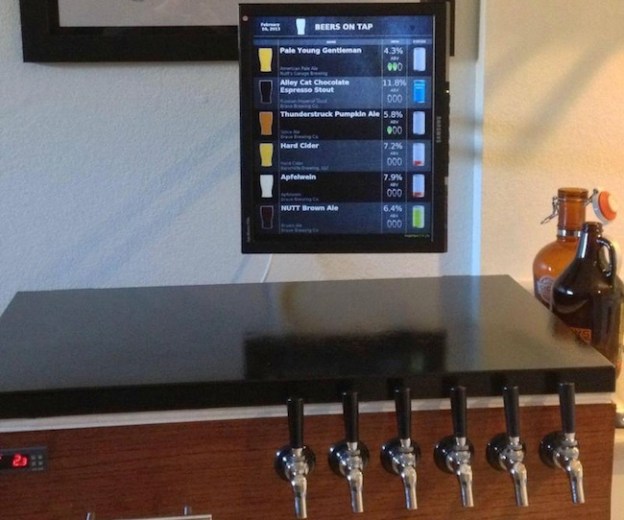
We’re sure people have been finding lots of different uses for the credit-card-sized computer that is the Raspberry Pi. A Reddit user, who goes by the name of SchrodingersDrunk, found a very creative way to put the mini-computer to use. To be more specific, he used his Raspberry Pi to create a board that powers his high-tech homebrew tap list. DIY beer makers, eat your heart out.
SchrodingersDrunk used a 7-inch touchscreen for the set-up, which set him back a total of roughly $35. He and his roommate came up with a project over a few bottles of beer (obviously). He was assigned the task of creating a digital tap list, and his roommate ended up having to build a high-tech kegerator. Apparently, they were originally going to use a whiteboard, but he told Wired that they’d “seen digital tap displays in a couple bars,” and they “didn’t really look back.”
Now’s here’s the good news: the creator isn’t a programmer and didn’t have extensive experience with software, which means there’s no reason why you can’t do something like this, too. He came up with the beer list’s PHP codes by looking at PHP and Python tutorials for Linux and doing lots of online research. He credits his strong “Google-fu” for coming up with something that works, admitting that it “was quite the task” for someone who’s not a coder or a graphic designer.
In the picture above, you can see the digital board listing all the homebrew beers on tap, but SchrodingersDrunk says he’s working to make it more interactive: “The goal is to be able to click on a beer and get the recipe and tasting notes,” he writes on Reddit. “But I am still trying to find a way to display the information that looks good and plays nice with the [Raspberry] pi.”
If you’re interested in seeing the codes used to create the tap list, check out the developer’s post on GitHub.
Image via Wired


